|
|
Mari Stefansdotter
The background of my interest in the Church and the events that have taken place in it have influenced my choice of topic in the following way:
I was born and raised on the Åland Islands, a medieval trading post for seafarers. Twelve churches from the Middle Ages have been preserved here. As a child I often accompanied my grandfather to the cemetery to attend to the graves. Sometimes we entered the church to take photographs and to listen to grandfather’s many exciting stories from the area. He was raised in the parish and had travelled on foot, on horseback and by boat to church on Sundays.
Maybe that is why it is so easy for me to imagine how everyday life was connected to the Church for the generations that have gone before us, to appreciate the art and handicraft that is preserved there, and to feel both curiosity and anguish of its social aspirations.
From time immemorial the Church and art have had a close relation. The Church has acted as commissioner and the artists have assisted it by visualising its message. Today it is different: When we visit a church we can see traces from the various epochs through expressions, styles and choices of materials, but the Church does not commission fresco painters, sculptors, or silversmiths any more. Maybe it is regarded out-of-date to preach through visual attributes? Or has the message been altered so that it is better conveyed by mass media?
During my work with the SAKRUM exhibition the original idea was to employ an ancient imagery and express it through a mix of new and old graphic methods. In the same way I wanted to combine the contents of the picture: a medieval expression and contemporary patterns. The works turned out to treat the theme of birth – the fonts, and death – the crosses, crowned with a suite about life – the madonnas.
My works are often a question to myself: Can life have been like this? Could it be like this? Working as an artist is to explore rather than to research, also when it is goal-oriented and concentrated on results. It is stretching boundaries and striving for a greater understanding of the theme one has challenged. It is a long journey that one does not know where or when it started and it is with great surprise one realises that the traces that one has left in the course of one’s work, such as Anna’s cast iron boxes, will outlive oneself many times over and that we are not likely to experience the end of this journey.
Initially the work with an exhibition generates more questions than answers, but by opening it to the public the answers tend to come through its visitors.
|
|
|
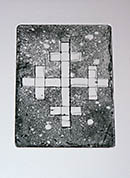 |
 |
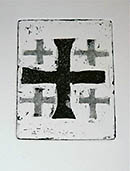 |
|
Korsat kors, 2006, linjeetsning, akvatint
|
Ankarkors, 2006, akvatint, flatbitning
|
Jerusalemkors, 2006, linjeetsning, akvatint
|
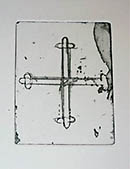 |
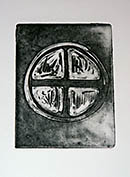 |
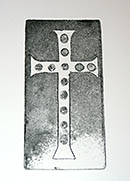 |
|
Klöverbladskors, 2006, Linjeetsning
|
Konsecretionskors, 2006, etsning
|
Kors med 12 stenar, 2006, linjeetsning, flatbitning, akvatint
|
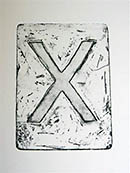 |
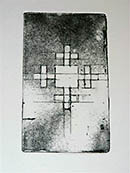 |
 |
|
Andreaskors, 2006, flatbitning
|
Korskvadrat, 2006, linjeetsning, akvatint
|
Lothringskt kors, 2006, linjeetsning
|
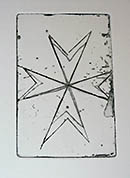 |
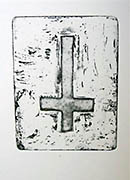 |
 |
|
Malteserkors, 2006, linjeetsning
|
Petruskors, 2006, flatbitning
|
Ryskt kors, 2006, akvatint
|
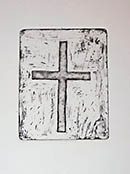 |
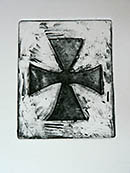 |
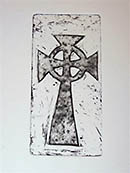 |
|
Latinskt kors, 2006, flatbitning
|
St Georgskors, 2006, flatbitning
|
Ringkors, 2006, flatbitning
|
.jpg) |
.jpg) |
.jpg) |
|
|
|
|
.jpg) |
.jpg) |
Kvinnorna är förlagor till madonnor, serigrafier, 2006
|
|
|
|
|
|

